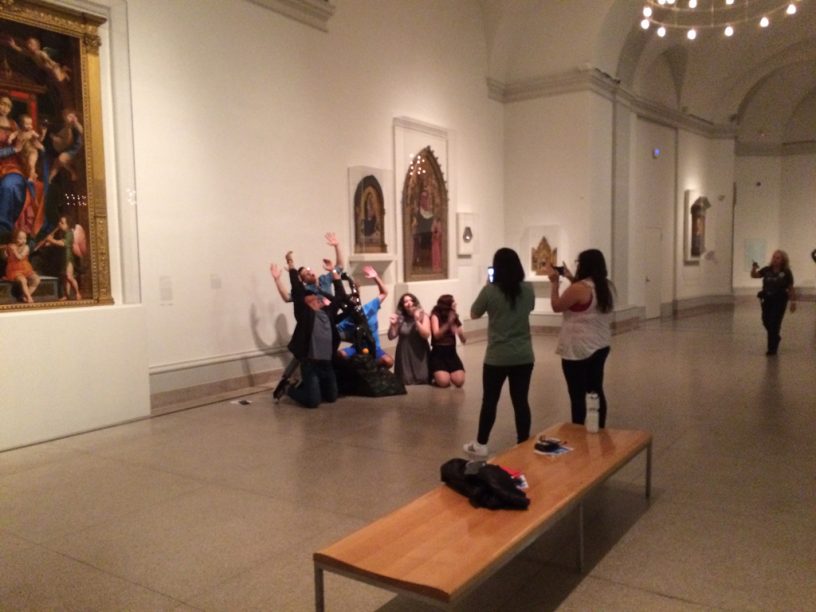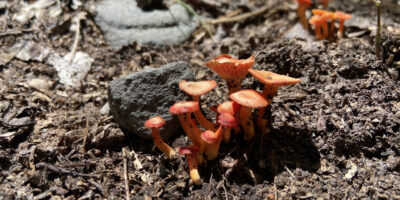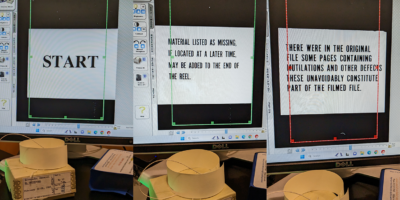By Gwen Shaw
In every class I have taught, I have always included at least one mandatory field trip or site visit. It’s one of my only old-fashioned, stodgy art history tenets: I believe the experience of a work of art is profoundly different, and better, in person than on a screen, via a book, or on a projector in the classroom. One of the benefits of teaching in New York City and the surrounding area is the rich selection of museums and cultural institutions, from the Metropolitan Museum of Art to the Museum of Modern Art, from the Museum of the City of New York to the Museum of Contemporary African Diasporan Arts (MoCADA).
So, every semester I teach, we go to the museum. Sometimes we go as a group (although I find this a little on the restrictive side); sometimes we go on our own, with a worksheet or other assignment as a guide; and sometimes we split the difference, meeting as a group to have a brief discussion, exploring on our own, and then reconvening to debrief. This semester, teaching in a neighboring county of NYC, I opted for a self-guided field trip to the Met that would culminate in a short 2-page paper on an object the student encountered at the museum. (NB: although this is the assignment I actually used for the assignment, I acknowledge that it would benefit from a bit of revision.) Everyone went on their own time, and in exchange for asking my students to schlep to Manhattan I cancelled one class.
Although the papers trickled in (with so many different schedules, it was understandable that people chose to go on different days), I was surprised by how thoughtful and thorough they were when compared to the students’ take-home exam essays. The museum papers demonstrated a facility with close-looking and sustained attention to the works, with ample formal analysis—one of the key skills of art history. By contrast, the essays they produced for the exam were often more formulaic attempts to meet the criteria I set out in the prompt (e.g. “using three works of art, write about the influence on humanism in the development of mimesis during the Renaissance.”)
Why were the museum papers so good? When I asked my students, they replied that they enjoyed the agency of choosing their own work of art to focus on, and the more leisurely span of time to write about a single object they had seen in person. Of course, the take-home essay assignment similarly allowed for choice and offered ample time to write, but also demanded that the students address the concept or issue I chose within their three works of art. The museum assignment was comparatively broad and open-ended, giving the students wide latitude to focus exclusively on their chosen work, without taking sociopolitical, historical, or cultural information into consideration. Perhaps the physical experience of a work of art spurred them to mine the object for information rather than the textbook or internet, and to focus on the more formal, immediate conditions of the work rather than textual descriptions of it in the reading we had been doing.
Regardless of the reason(s), the lesson for me was that museum visits—and site visits of all kinds—are an important and valued experience for students that encourage them to do their best work. Next time I teach, I may even ask students to make 2 visits, rather than just the one!
Experiential trips give students access to primary sources across the disciplines. Art museums may be the logical destination for an for art history class, but site visits to archives or history museums could be valuable across the disciplines, and supplement courses in English, history, anthropology, or non-Western art, among others. I have included a couple of sample museum assignments of my own design below; these just to get you started, so please feel free to modify or share! I’ve also included a list of some museums to which you might plan visits, and the disciplines (outside art history) for which they could be especially helpful.
Art history survey scavenger hunt
Museum visit object-oriented formal analysis for Women and Art course
The Museum of Modern Art
20th Century History, Literature, Art, Film, or Philosophy; Women’s Studies; Film or Cinema Studies; New Media Studies
The Rubin Museum of Art
South Asian Studies, Religion or Eastern Philosophy; Asian Studies
The Queens Museum of Art
New York City history or civic engagement (see the Panorama or the appointment of Tom Finklepearl as Commissioner of NYC’s Department of Cultural Affairs)
The Museum of the City of New York
Urban Studies; NYC History, Politics, Culture; Anthropology; Political Science; American History
The Studio Museum
American History (especially since the 1960s); African American or African Diasporan studies; Contemporary Art, Race, Politics, or Culture
El Museo del Barrio
Latin@ Studies, NYC History and Culture, Latin American or Central American studies
The Museum of Contemporary African Diasporan Arts
African Diaspora or African American art, history, culture, politics; Global or Contemporary Cultures
The Brooklyn Museum’s Elizabeth Sackler Center for Feminist Art
Women’s Studies; Feminist Studies; Queer Studies
Gwen Shaw is a doctoral candidate in Art History and a Contributing Writer for Visible Pedagogy.









Leave a Reply